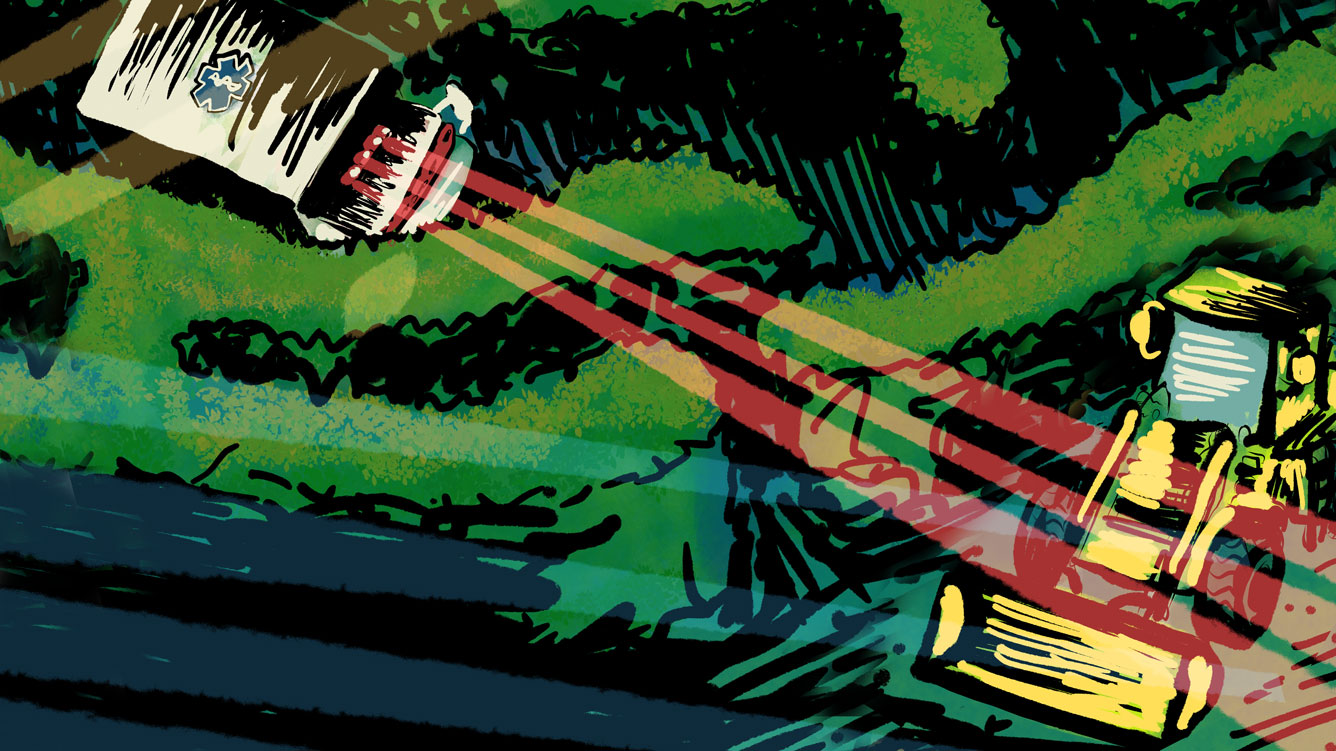This story is part of The Cancer Letter’s ongoing coverage of COVID-19’s impact on oncology. A full list of our coverage, as well as the latest meeting cancellations, is available here.
On a chaotic COVID weekend two months ago, a friend’s child (a young, talented black and Latino student athlete) came home from college not feeling well. The young man’s mother, an executive administrative assistant, called off work to stay home with him because of his, as she described, “full-blown flu-like symptoms.”
Concerned for her son, she called her doctor to ask if she could bring him to the ER and get him COVID-19 tested, but was discouraged from doing so. When he began experiencing respiratory distress, his mother rushed him to the ER, where they ruled out strep, and flu, but not COVID-19; he apparently at the time did not meet the “requirements” set by the CDC algorithm. He was given antibiotics, an inhaler and sent home. He began to slowly recover after several weeks. His mother (a middle age Latina woman, primary breadwinner of her family, and hourly worker), seeing that her son was on the mend, was relieved of her COVID-19 worries. She returned to work, where she shared an office with at least several other individuals. Several days later, she and her husband (a black, middle age male with multiple co-morbidities) started experiencing similar symptoms as his son. She again asked her doctor if she should be worried about COVID-19. Frustrated and scared, she texted: “The nurse said she nor [her] husband met the ‘requirements’ to get COVID-19 tested, and even if they did, they didn’t have any on-site testing available.” She was instructed to call and get approval from the health department for COVID testing. Two days later, she felt worse. This time, she did not call her doctor, given the previous “frustration and futility of calling,” as she put it. Twenty days from her first request for a COVID-19 test for her son, she was rushed to the ER, where she was diagnosed with multi-lobar pneumonia; and admitted to the hospital. There, she tested positive for COVID-19, and so did her family.
The above example was repeated, rehashed, and relived throughout many parts of the U.S. As such, the growing COVID-19 pandemic also began to shine an even brighter light on the ever-present and long-existing racial disparities reflected within our communities. However, given the recent surge in news coverage, it would appear that both the media and nation have rediscovered the existence of racial health disparities in the U.S. all over again. W.E.B DuBois, more than a century ago, showed data that pointed to the differences in the life expectancy of Black Americans and their White counterparts. A novel T-shirt these days might read, “show me a new disease, and I’ll show you an old racial health disparity.” So, as unfortunate as it might seem, it was not surprising that deaths among black Americans during the COVID-19 crisis would be overrepresented at more than twice their relative demographic proportion. In fact, the former American Public Health Association president and health equity scholar Dr. Georges Benjamin predicted that we would see an explosion of COVID-19 in our minority communities. Thus, in Milwaukee, a city with 26% black residents, 81% of COVID-19 deaths were among blacks. Similarly, in Chicago, a city with 39% black residents, 70% of COVID-19 deaths were among blacks. Even smaller cities and towns were not immune to this phenomenon; in San Antonio with a 7% black population, blacks represented 36% of the COVID-19 deaths. In total, African Americans make up 13% of the U.S. but comprise greater than 33% of all COVID-19 deaths.
Amid the moral outrage, the immediate explanation for such disparity in mortality was the imbalance of comorbidities (diabetes, hypertension, asthma, etc.) among blacks, which made them more susceptible to succumb to the COVID virus. The “individual risk factor” explanation has become the scientific theory (why something happened) behind the scientific law (an observed phenomenon) of inequities. In other words, we have not only come as a society to accept that disparities will occur (as a law), but we can always explain them away by the differential distribution of individual risk factors (as the theory). Thus, the “individual risk factor theory” becomes a unifying, acceptable explanation and a refrain that is absolving from our collective, societal responsibility. To put it even more simply, underserved communities, are underserved, because they are underserved (as stated by Dr. Otis Brawley), and this has been made abundantly clear during the recent COVID-19 crisis.
Underserved communities did not create the U.S. Public Health Experiment of 1932, a.k.a. Tuskegee Study, the Jim Crow South, the unfair, biased processes of the prison system, nor the nationwide practice of redlining that continue to render our communities separate and unequal. Arguably, the underserved communities did not create the “perfect storm” of co-morbidities (diabetes, hypertension, obesity, etc.) that increased their risk of COVID-19. Thus, at a minimum, we should readily admit that political, economic, and social structures were created in the U.S. that have over time disadvantaged many underserved communities, that these very structures continue to substantially contribute to the increased poor outcomes from COVID-19 that we are experiencing today. These unfair structural factors (e.g. housing, education, access to health care, food insecurity, crime etc.) have a tremendous impact on the upstream determinants of health (excess co-morbidities), driving disparities within these communities. And they seem to have evaded the attention of our country leaders and even a number of our preeminent scientists.
The surprise among government leaders and the media regarding COVID-19 disparities is a symptom of a more powerful, endemic virus that always lurks beneath the surface: the virus of denial, the continuous, endemic infection that affects leaders across all levels to deny the fact that there are systemic differences with the quality and access to care for communities of color. That our response to disparities is to simply demand the same soggy data by race/ethnicity without delving deeper into upstream reasons, and demanding collective accountability reminds me of a quote by the writer Byron Katie that “an unquestioned mind is the world of suffering.” By the way, the friend and her family are almost fully recovered. But how many others like them are out there? And who is enumerating the uncountable (undocumented) groups? This is not an issue of data/methodologies. It is an issue stated best by Julian Richmond: “you need science, a mechanism, and most of all the political will to create something big.”
While identification of these disparities has the potential to allow us to have the ability to address disparities, there remains a big disconnect between the known disparities that exist in many of our most vulnerable communities and the actions needed to reduce these disparities. The “action” plan and strategy for addressing disparities typically happens in a post hoc fashion that is often poorly funded, fragmented, and frequently lacking a national framework. Furthermore, admittedly even more vexing is that fact that most of the successful federal and state health disparities programs have been dismantled over time. This plays out in the way racial health disparities data are collected and disseminated. Our public health infrastructure has been poorly resourced and national leadership has been lacking on this issue to serve the critical function of public health surveillance. Data by race and ethnicity for COVID-19 cases was an afterthought and has been slow to come by. In fact, public health monitoring of racial/ethnic data were not reported by most cities, states, or even nationally until pressure from the Congressional Black Caucus and others was applied.
Positive intent forward, we acknowledge that the COVID-19 pandemic was unprecedented. Our ways of life have been challenged, and we will forever live under a new normal. The impact of this pandemic in the U.S. is new. The virus is new (to us). The widespread unmet need for sanitation and personal protective equipment in our society are all new. That there will be continued racial/ethnic disparity post-COVID-19, however, is not new nor news. The need to report data by race/ethnicity should also not be new or a simple afterthought. To talk about bias in the potential distribution and administration of tests in health care may be unpopular, especially during this time, when we are rightfully touting our healthcare workers as heroes. Indeed, they are. But they are also victims, as unaware, unquestioning implementers of a biased system that perpetuates disparities. Our frontline workers should be “essential,” not “sacrificial”.
The issue isn’t so much that we don’t know that racial health disparities exists. Nor is it that we have not come up with well thought-out policies and plans to address racial/ethnic health disparities. In fact, there have been a number of high-powered blue ribbon panels created to address health disparities, that have made a number of meaningful recommendations, most of which have collected a ton of dust or have simply fallen on deaf ears. There will almost certainly be a renewed call to carry out even more studies to get to the bottom of the COVID-19 health disparity issue. Many blue ribbon panels will be reassembled to come up with even more well thought-out recommendations. However, the missing link in all these well-meaning activities remains the actual “will” to execute a given plan. We submit that the appropriate response is not to do more studies during our COVID-19 experience, but to have more data transparency and take real, thoughtful action to reduce racial health disparities with already-designed plans and with an endgame in mind.
So, our national leaders propose the following “innovative” ideas:
Address the inequality in housing issue, but the answers for this were put forth in 1965: the Patrick Moynihan Report, the Rumford Fair Housing Act, the McCone Commission Report recommending the establishment of emergency literacy and preschool programs, improved police-community ties, increased low-income housing, job training projects, upgraded healthcare services, and more efficient public transportation;
Improve access to a high-quality education for all, but the answer for this was put forth in 1974: the Equal Educational Opportunities Act;
Improve access to high quality care, but we started this movement in 1985 with the Heckler Report.
We humbly propose a simpler solution applicable to all: let’s find the will to act. We can overstock personal protective equipment, hand sanitizer, and COVID tests, but without the will to act, to ensure equitable and timely distribution, we will continue reliving the same issues, like a generational Groundhog Day. President Franklin D. Roosevelt said it best: “this nation asks for action, and action now.”
Let’s act now and write about COVID-19 later. Let’s act now and establish the next set of blue ribbon panels later. As we rediscover Racial Health Disparities “All Over Again” through the COVID-19 period, let’s not repeat the old mistakes.
Let’s make mistakes of a different sort, like having too much PPE, too many hand sanitizers—and having too many COVID tests performed.














